composite deck / bleach mold cleaning recommendations negligent
NEGLIGENT RECOMMENDATIONS FOR CLEANING MOLD & MILDEW FROM A COMPOSITE DECK
Each individual composite manufacturers recommended cleaning instructions can be found on the composite manufacturers web sites under "Cleaning & Care." Some have special recommendations for cleaning "*Mold" such as a "Mold Technical Bulletin." This is because mold is the hardest to clean off and keep from growing back, especially when the wrong chemicals are recommended for its remediation. Well intentioned but negligent recommendations of most composite manufacturers for mold remediation, is of great concern.
*Mold is defined as;
1.) Any of various fungi that often cause disintegration of organic matter.
* American Heritage Dictionary-Cited This Source
COMPOSITE MANUFACTURER CLEANING INSTRUCTIONS
AERT Moistureshield®:
www.moistureshield.com/moistureshield/CareCleaning/CleaningInstructions/tabid/134/Default.aspx
AERT®/Weyerhaeuser®/LoweÂs® ChoiceDek®:
www.choicedek.com/ChoiceDekCleaning.pdf
Alcoa Oasis®:
www.alcoa.com/alcoahomes/objects/Docs/Brochures/OasisDeckingBrochure.pdf
Certainteed Boardwalk®:
www.certainteed.com/NR/rdonlyres/93911570-7103-4512-844F-82FAC6DD53B5/0/712.pdf
Correct Deck®:
www.correctdeck.com/products/care/cleaning.htm & www.correctdeck.com/products/care/cleaning_products.htm
Dow Symmatrix®:
www.dow.com/styrofoam/na/symmatrix/care/
Elk®:
www.elkcorp.com/products/decking_crosstimbers_cleaning_inst.cfm
Epoch Evergrain®:
www.evergrain.com/carecleaning.jsp
Fiberon®:
www.fiberondecking.com/html/files/G071505B_cleaning.pdf
www.fiberondecking.com/html/files/G072005_mold_mildew.pdf
www.fiberondecking.com/html/files/G071505_tannin.pdf
Geo Deck®:
www.geodeck.com/cleaning.html
Home Depot Veranda®:
www.verandadeck.com/faq/index.htm#cc
Rhino Deck®:
www.rhinodeck.com/helpful_hints.php
TimberTech®:
www.timbertech.com/WarrantyAndCare/CareAndCleaning.aspx#1
Trex®: www.trex.com/Universal/product_info/workingwithtrex/careandcleaning.asp#topnav , www.trex.com/spark/Care_&_Cleaning.pdf & www.trex.com/litcenter/Trex_mold.pdf
Universal Forrest Products Latitudes®: www.ufpi.com/product/latitudes/faq.htm#decking_cc
LP WeatherBest®:
www.lpcorp.com/lpweatherbestdeckingandrailing/productinformation/careandmaintenance.aspx
and any other composite made of wood and plastic.
All of these composite products are great alternatives to wood materials for decking and require far less maintenance. You never need to paint, stain or seal them which could save time, money and the environment. Most composites will last far longer than decks made of wood, especially if the wood is not maintained properly. Unfortunately, the composite materials are not as easy to keep clean as manufacturers claim in the marketing and advertising of their products. Many common household cleaning products that are recommended by these manufacturers may work great for some staining issues like grease and not at all for others like mold. Others will brighten tannin stained wood fibers or remove rust. Many of the cleaning chemicals recommended by composite manufacturers are not designed or intended by their manufacturers for use on composites. All cleaning chemicals are potentially toxic if accidentally mixed together. Most are dangerous and environmentally unfriendly.
A myth exists concerning the use and "effectiveness" of *Chlorine *Bleach in the removal, cleaning, or killing of mold on composite decking which are made of plastic & wood. *Sodium Hypochlorite is the active chemical ingredient in Chlorine Bleach. Chlorine Bleach, commonly referred to as Laundry Bleach or Bleach, is generally perceived to be an "accepted and answer-all" *biocide or *pesticide to abate mold in the remediation processes on composite materials such as composite decking. Nothing could be further from the truth.
*Chlorine is defined as;
klawreen] Cl, element 17, boiling point â35°C. A greenish-yellow gas, containing diatomic molecules (Cl2). A very reactive substance, it does not occur free in nature, but is recovered from deposits of NaCl or KCl by electrolysis. It may also be recovered from sea water, which contains about 2% chlorine as dissolved Clâ. The gas has an intense odor and is very poisonous. Industrially, chlorine is mainly used in reactions with organic compounds to form propellants, cleaning fluids, and monomers for rubber production. It is also widely used as a powerful disinfectant, such as in swimming pools.
*Crystal Reference Encyclopedia  Cite This Source
*Bleach is defined as;
1.) To remove the color from, as by means of chemical agents or sunlight.
2.) To make white or colorless.
* American Heritage Dictionary-Cited This Source
*Sodium Hypochlorite is defined as;
1.) An unstable salt (NaOCl) used as a bleaching agent and disinfectant.
*Word Net  Cited This Source
*Biocide is defined as;
1.) Any chemical that destroys life by poisoning, esp. a pesticide, herbicide, or fungicide.
Dictionary.com Unabridged (v. 1.1) Â Cited This Source
*Pesticide is defined as;
1.) A chemical used to kill pests, especially insects.
* American Heritage Dictionary-Cited This Source
Chlorine Bleach has been proven to kill bacteria, viruses and fungus but has not been proven effective in killing or removing molds on *porous surfaces such as composite decking and this fact is stated on the label directions of products like Clorox® Bleach. Most composites are porous materials because they are full of pores and permeable by water, air, etc. Some Composite manufacturers claim that the composite they manufacture is "fully encapsulated" and there for, their product is non-porous. If a composite absorbs moisture (humidity), however little it may be, the composite is porous. You can tell if your composite is porous if it becomes heavier when water is added. You can ask any composite manufacturer; "what their composites moisture absorption rate or *Porosity?"
*Porous is defined as;
1.) Full of pores.
2.) Permeable by water, air, etc.
*Dictionary.com Unabridged (v1.1) - Cite This Source
*Porosity is defined as;
1.) The property of being porous; being able to absorb fluids
*WordNet - Cited This Source
Chlorine Bleach sold for laundering clothes is a 3-8% (see Clorox® Bleach products MSDS) Sodium Hypochlorite at the time of manufacture. Strength varies from one formulation to another and gradually decreases over time while being stored. Store bought Chlorine Bleach itself is 92-97% water. Water is one of the main contributors of the growth of molds. Tests have shown that using Chlorine Bleach for mold remediation re-grew mold at twice the rate than what originally grew before Chlorine Bleaching, within a short period of time.
A study by Oregon State University on the "Ability Of Bleach And Other Biocide Treatments To Remove And Prevent Mold On Douglas-fir Lumber." "While bleach is often recommended for remediation of surface mold on wood and other porous surfaces, our [university research study] study results illustrate that the treatment does not eliminate the surface *microflora," is the conclusion of the Oregon State University study of the effects of Chlorine Bleach on mold growth on Douglas fir wood [an important timber crop in the state of Oregon]. The research study was conducted by Professor Jeffrey Morrell, Dept. of Wood Science, Oregon State University, as assisted by Adam Taylor [graduate research assistant] and Camille Freitag [Senior Research Associate], as published in Forest Products Journal, 54:4, 2004. This info can be found at: www.traskresearch.com/mold_bleach.pdf .
Our observations of cleaning numerous moldy composite decks have concluded these same findings, especially when our customers called back with in weeks complaining that the mold had returned after using products that contain Sodium Hypochlorite such as Chlorine Bleach.
*Microflora is defined as;
1.) A small or strictly localized flora (as of a microenvironment).
2.) Minute plants; especially : those invisible to the naked eye
*Mirriam-WebsterÂs Medical Dictionary  Cited This Source
FROM OSHAÂs Mold Remediation/Clean Up Methods guidelines:
"Molds can infiltrate porous substances and grow on or fill in empty spaces or *crevices."
"Mold can generally be removed from non-porous surfaces by wiping or scrubbing with water and detergent. It is important to dry these surfaces quickly and thoroughly to discourage further mold growth. Instructions for cleaning surfaces, as listed on product labels, should always be read and followed."
"As a general rule, simply killing the mold, for example, with biocide is not enough. The mold must be removed, since the chemicals and proteins, which can cause a reaction in humans, are present even in dead mold."
"The use of a biocide, such as chlorine bleach, is not recommended as a routine practice during mold remediation." "In most cases, it is not possible or desirable to sterilize an area, as a background level of mold spores comparable to the level in outside air will persist."
"Biocides are toxic to animals and humans, as well as to mold."
"Never mix chlorine bleach solution with other cleaning solutions or detergents that contain ammonia because this may produce highly toxic vapors and create a hazard to workers."
"When you use biocides as a disinfectant or a *pesticide, or as a *fungicide, you should use appropriate Personal Protective Equipment (PPE), including respirators. Always, read and follow product label precautions. It is a violation of Federal (EPA) law to use a biocide in any manner inconsistent with its label direction."
The OSHA Mold Remediation/ Clean up Methods guidelines can be found @ www.osha.gov/dts/shib/shib101003.html .
*Crevice is defined as;
1.) A narrow crack or opening; a fissure or cleft.
*Fungicide is defined as;
1.) A chemical substance that destroys or inhibits the growth of fungi.
* American Heritage Dictionary-Cited These Sources
The Environmental Protection Agency (EPA)
"A Brief Guide to Mold, Moisture, and Your Home"
"Biocides are substances that can destroy living organisms. The use of a chemical or biocide that kills organisms such as mold (chlorine bleach, for example) is not recommended as a routine practice during mold cleanup. There may be instances, however, when professional judgment may indicate its use (for example, when immune-compromised individuals are present). In most cases, it is not possible or desirable to sterilize an area; a background level of mold spores will remain - these spores will not grow if the moisture problem has been resolved. If you choose to use disinfectants or biocides, always ventilate the area and exhaust the air to the outdoors. Never mix chlorine bleach solution with other cleaning solutions or detergents that contain ammonia because toxic fumes could be produced."
This information can be found @ www.epa.gov/iaq/molds/hiddenmold.html
All of what OSHA and the EPA recommend for mold remediation is for inside buildings or in controlled environments, where moisture (humidity) can be controlled. These proven scientific principle recommendations can and should be followed whenever possible, especially for mold remediation on porous composite building materials in uncontrolled environments outside. Chlorine Bleach or Sodium Hypochlorite based cleaners will only make the mold problem worse on composite materials.
Mold living outside, in its natural environment, is far more problematic and unpredictable to building materials including composites. Mold spores can travel unchecked and are uncontrollable through the air. You canÂt control moisture outside, so you canÂt control the mold spores from growing where ever they land and have something to eat (like the wood fiber or flour mixed with plastic that composites are made of), unless you have a way to repel it and keep it from growing when moisture contacts the mold *spores or the remaining *hypha if Chlorine Bleach or Sodium Hypochlorite based cleaners has been used for mold remediation previously.
*Spore is defined as;
1.) A small, usually single-celled reproductive body that is highly resistant to desiccation and heat and is capable of growing into a new organism, produced especially by certain bacteria, fungi, algae, and non-flowering plants.
2.) A dormant non-reproductive body formed by certain bacteria in response to adverse environmental conditions.
*American Heritage Dictionary  Cited This Source
*Hypha (hÄ«'fÉ) is defined as;
1.) Hypha is one of the long slender tubes that develop from germinated spores and form the structural parts of the body of a fungus. In many species of fungi, hypha are divided into sections by cross walls called septa. Each section contains at least one haploid nucleus, and the septa usually have perforations that allow cytoplasm to flow through the hypha. A large mass of hyphae is known as a mycelium, which is the growing form of most fungi. From time to time, hyphae develop reproductive structures that are partitioned from the hypha by holeless septa. In many species, these structures are microscopic; in others, they are visible and large. Mushrooms and shelf fungi are visible reproductive structures of fungi.
*The American Heritage Science Dictionary  Cited This Source
Mold remediation involves the need to *disinfect wood and wood-based building materials such as porous composite decking. The properties of Chlorine Bleach or Sodium Hypochlorite based cleaners prevent it from "soaking into" composite building materials to disinfect the deeply embedded hypha "roots" of mold and completely remove them. The object to removing mold and keeping it from growing back for prolonged periods of time is to remove its hypha, which store bought chlorine bleach does not do.
*Disinfect is defined as;
1.) To cleanse so as to destroy or prevent the growth of disease-carrying microorganisms: disinfect a wound.
*American Heritage Dictionary  Cited This Source
The chemical structure of Sodium Hypochlorite prevents Chlorine from penetrating into porous building materials such as composites. The Chlorine just stays on the outside surface and appears to quickly remove the dead unsightly mold, whereas mold has hypha that grows in a mycroflora inside the porous "crevices" in the composite. The water content in Chlorine Bleach or Sodium Hypochlorite based cleaners penetrates to the hypha and actually FEEDS the whole *mycelium. The Chlorine never actually gets to the mycelium "mold roots" and kills or removes them. This is why a few days to weeks later you will notice darker, more concentrated mold growing (faster) on composite decking cleaned with Chlorine Bleach or Sodium Hypochlorite based products like common deck cleaners. Simply put, cleaning composite materials with Chlorine Bleach or Sodium Hypochlorite based cleaners for mold remediation is like pulling weeds and not getting the roots, then watering them with MiracleÂGrow® and allowing them grow back as if they were in a hydroponics farm under all the right conditions. Chlorine Bleach or Sodium Hypochlorite based mold cleaners recommendations are the poorest remedy for mold remediation any company or person could possibly recommend unless you make the Chlorine Bleach or Sodium Hypochlorite based cleaners and are getting rich. Only the uneducated would recommend the use of Chlorine Bleach or Sodium Hypochlorite based cleaners for cleaning mold or any fungi on porous surfaces like composite decking.
*Mycelium is defined as;
1.) The vegetative part of a fungus, consisting of a mass of branching, threadlike hypha.
2.) A similar mass of fibers formed by certain bacteria.
*The American Heritage Science Dictionary  Cited These Sources
Many reputable composite manufacturers recommend Chlorine Bleach or Sodium Hypochlorite Based cleaners to remove mold from the materials they manufacture because they do not understand the problem they are facing with fungus and have not done the research. They are more interested in manufacturing and selling their composite than they are in cleaning them. Many view cleaning as the "customers" problem. They have relied on chemical companies to solve their cleaning problems. Most chemical manufacturers are only too happy to supply them with products they already produce and are perceived to remediate mold. Most composite manufacturers are looking for a "Quick Fix" and recommending off the shelf cleaners that were not designed, intended, or legally approved for use on composites due to claims many of the manufacturers have made of "NO MAINTENANCE" or "LOW MAINTENANCE." Most composite manufacturers are experts in manufacturing their products but are not when it comes to cleaning them, especially of fungi. Beware of any company that recommends the use of Chlorine Bleach or any Sodium Hypochlorite based deck cleaner for mold remediation on composite building materials such as decking because the only thing getting "cleaned" will be your wallet and the only thing getting "KILLED" might be you.
Chlorine Bleach (Sodium Hypochlorite) is used effectively for killing bacteria and some species of mold on non-porous surfaces such as fiberglass, granite counter tops and surfaces that do not absorb moisture. It is the only product people have known for years. The more often you use Chlorine Bleach for mold remediation on composites, the more resistant the mold becomes to Chlorine Bleach, the faster it will grow back and the harder it will be to get clean, making the problem more difficult to keep the composite material clean in the future.
What potential mold killing power Chlorine Bleach or Sodium Hypochlorite Based cleaners might have is diminished significantly as the bleach sits in distribution warehouses, on store shelves or inside your home/business. A major loss in Chlorine in just the first 90 days inside a never opened jug or container (this is why most manufacturers of Sodium Hypochlorite based composite deck cleaners have a short shelf life such as Expert Chemical® Composite Deck Cleaner and Enhancer/35days). Chlorine constantly escapes through the plastic walls of its containers being unhealthy to store in non-well ventilated areas.
The Chlorine in Sodium Hypochlorite accelerates the deterioration of composite materials. It breaks down the *lignin in wood fibers or wood flour used in composites. It rapidly breaks down the plastic, and fades colored composites especially when used in direct sunlight. It can lead to pre-mature checking, splintering and cracking that can affect the structural integrity of composites and its performance. Thankfully, this is covered by most composite manufacturerÂs warranties.
*Lignin is defined as;
1.) A complex organic compound that binds to cellulose fibers and hardens and strengthens the cell walls of plants. Lignin is a polymer consisting of various aromatic alcohols, and is the chief non-carbohydrate constituent of wood.
*The American Heritage Science Dictionary  Cited This Source
Chlorine Bleach or Sodium Hypochlorite Based cleaners are highly *corrosive to stainless steel, steel, and galvanized steel or any metal used in structural connectors or fasteners (screws or nails) that hold the structural lumber supporting the deck and deck boards in place. This fact is stated on Chlorine Bleach and Sodium Hypochlorite Based cleanerÂs labels. Over time, this could lead to premature failure and make your deck incredibly unsafe, eventually collapsing and leading to injury or death.
*Corrosive is defined as;
1.) Having the quality of corroding or eating away; erosive.
*Dictionary.com Unabridged (v1.1) - Cited This Source
Chlorine Bleach or Sodium Hypochlorite Based cleaners greatly affects the performance of treated (ACQ; Alkaline Copper Quaternary, & CCA; Cromated Copper Arsenate) structural lumber supporting the composite, especially in high strengths. It shortens the life of these treatments. It weakens the lignin in the wood fiber affecting its structural integrity. Over time this could lead to premature failure and could cause a deck to collapse leading to injury or death and litigation against any manufacturer who recommends its use.
Chlorine Bleach or Sodium Hypochlorite Based cleaners will be *off-gassing for a period of time after you attempt to clean a composite deck with it. Chlorine off gassing is harmful to plants, humans and animals (cats, dogs, birds) and anything living including mold. It has been known to cause pulmonary embolisms in low resistant and susceptible people including children and the elderly. You should always wear a respirator approved for Chlorine, especially if you have any lung diseases such as emphysema, bronchitis, asthma, etc. and always keep young children and the elderly at a safe distance and up wind. If you have cleaned a deck with Chlorine Bleach or Sodium Hypochlorite based cleaners you have probably noticed the Chlorine stench for quite some time after cleaning the deck and more than likely ended with a terrible head ache and breathing problems if you did not wear a respirator.
*Off-gassing is defined as;
1.) The emission of hazardous chemicals from synthetic fabrics, plastics, vinylÂs and household cleaners.
Town & Country Magazine SPECIAL GREEN ISSUE 4/2007 p.180 -Cited this source.
Chlorine bleach will evaporate within a short period of time; especially when it is used in hot temperatures and the composite surface is in direct sunlight. If the composite is not dry when the bleach evaporates, or moisture is still in the contaminated area on the composite, (humidity, outside air dampness, etc.) the contamination process is re-started immediately and to a greater degree.
Clorox, one of the largest manufacturers of Chlorine Bleach and manufactures Sodium Hypochlorite for many deck cleaning products says on its label directions:
"Clorox® Regular Bleach" "Active Ingredients: Sodium HypochloriteÂÂ6.0%, Other IngredientsÂÂÂ94.0%, TotalÂÂÂÂÂÂÂ..100.0% (Yields 5.7 available chlorine) "DANGER: COROSSIVE." "HOUSEHOLD USE" "DO NOT use this product full strength for cleaning surfaces. Always dilute strictly in accordance with label directions. For prolonged use, wear gloves." "Directions for Use: It is a violation of Federal law to use this product in a manner inconsistent with its labeling." "LAUNDRY USE" "1) Sort laundry by color 2) Add ¾ cup Clorox 3) Add laundry" "For Best Laundering Results: -Dilute ¾ cup of Clorox Regular Bleach in 1 quart of water.  Add to wash 5 minutes after wash cycle has begun." "Kitchen and Bathroom: Clean, disinfect and deodorize sinks, bathtubs, showers, floors, vinyl and tile. "1) Wash, wipe, or rinse items with water. 2) Apply disinfecting solution of ¾ cup Clorox Regular-Bleach per gallon of water. 3) Let stand 5 minutes. 4) Rinse thoroughly and air dry." "Toilet Bowls: Disinfect and deodorize your toilet. 1) Flush Toilet 2) Pour 1 cup of regular Clorox Regular-Bleach into bowl. 3) Brush entire bowl, including rim, with a scrub brush or mop. 4) Let stand 10 minutes before flushing again." "Plastic cutting boards: 1) Wash, wipe or rinse items with detergent and water. 2) Apply sanitizing solution of 1 tablespoon Clorox Regular-Bleach per gallon of water. 3) Let stand 2 minutes. 4) Air Dry." "Plastic Cutting Boards: 1) Wash, wipe or rinse items with detergent and water. 2) Apply sanitizing solution of 1 tablespoon Clorox Regular Bleach per gallon of water. 3) Let stand 2 minutes. 4) Air Dry.", "Wooden cutting boards. 1) Wash, wipe or rinse items with detergent and water. 2) Apply sanitizing solution of 3 tablespoons Clorox Regular-Bleach per gallon of water. 3) Let stand 2 minutes. 4) Rinse all surfaces with a solution of 1 tablespoon of this product per gallon of water. 5) Do not rinse or soak equipment overnight." "EPA Reg. No.5813-50" The Clorox® Regular MSDS can be found @ www.thecloroxcompany.com/products/msds/bleach/cloroxregularbleach0505_.pdf
Notice how Clorox® Regular Bleach is very specific in their label directions about what to use their product on and exactly how to use it by providing the dilution of their product to water and how long to let it work. None of the recommended uses of Clorox® Regular Bleach are for mold remediation or on any porous surface including composites. Clorox® Regular Bleach "EPA Reg. No. 5813-50" is for; "EPA Registered Tuberculocide Products." The link is to the EPA that confirms this is: www.epa.gov/oppad001/list_b_tuberculocide.pdf .
To use Clorox® Regular for any purpose other than what is stated on the label directions is a violation of EPA Federal Law and there fore any composite manufacturer recommending Clorox® Regular to be used for mold remediation on their products will have you violating Federal Law in addition to polluting the environment, endangering yourself, shortening the life of the composite, corroding metal structural connectors and fasteners, and weakening the structural integrity of the treated lumber the composite sits on. This exposes any composite manufacturer to liability if they recommend this Regular Clorox® for mold remediation on their product.
*Tuberculocidal is defined as;
1.) Destroying tubercle bacilli.
*Merriam-Websters Medical Dictionary- Cite This Source
*Tubercle is defined as;
1.) A small rounded projecting part or outgrowth, such as a wart like excrescence on the roots of some leguminous plants or a knoblike process in the skin or on a bone.
*Bacilli (plural) is defined as;
1.) Any of various rod-shaped, spore-forming, aerobic bacteria of the genus Bacillus that often occur in chains and include B. anthracis, the causative agent of anthrax.
2.) Any of various bacteria, especially a rod-shaped bacterium.
*Mycobacterium is defined as;
1.) Any of various slender, rod-shaped, aerobic bacteria of the genus Mycobacterium, which includes the bacteria that cause tuberculosis and leprosy.
* American Heritage Dictionary-Cited These Sources
"ULTRA CLOROX®" "CLOROX COMMERCIAL SOLUTIONS®" "Germicidal Bleach" "ACTIVE INGREDIENTS: Sodium HypochloriteÂÂÂÂÂ.6.15%" "OTHER INGREDIENTS.....93.85%" (mostly water) "TOTALÂ100%" "KEEP OUT OF REACH OF CHILDREN" "DANGER: CORROSIVE." "FIRST AID: IF IN EYES: Hold eye open and rinse slowly and gently with water for 15-20 minutes. Remove contact lenses, if present, after the first 5 minutes, then continue rinsing eye. IF ON SKIN OR CLOTHING: Take off contaminated clothing. Rinse skin immediately with plenty of water for 15-20 minutes. IN EATHER CASE CALL A POISON CONTROL CENTER OR DOCTOR IMMEDIATELY FOR TREATMENT ADVICE. SEE BACK LABEL FOR ADDITIONAL PRECAUTIONARY STATEMENTS.", "1.42 GAL (182 FL OZ) 5.38 L" "DIRECTIONS FOR USE: It is a violation of Federal Law to use this product in a manner inconsistent with its labeling. Do not use this product full strength for cleaning surfaces. Always dilute strictly in accordance with label directions. For prolonged use, wear gloves." For "DISINFECTING" "Floors, Walls, Bathtubs & Showers" "Product" "2/3 Cup" with "Water" "1 Gallon" "Instructions" "Prewash surface, mop or wipe with bleach solution. Allow solution to contact surface for at least 5 minutes. Rinse well and let air dry. For Canine and Feline parvovirus, let stand for 10 minutes." "Toilet Bowels" "Product" "2/3 Cup" "Water" "Toilet Bowl" "Instructions" "Flush Toilet. Pour this product into bowl. Brush entire bowl including under rim. Let stand 2 minutes before flushing." "SANITIZING", "Work Surfaces, Refrigerators & Freezers" "Product" "1 TBSP (1/2oz)" "Water" "1 Gallon" "Instructions" "Wash, rinse, wipe surface area with bleach solution for at least 1 minute, let air dry.", "SANITIZING" "Dishes, Glassware, Utensils" "Product" "1 TBSP (1/2oz)" "Water" "1 Gallon", "Instructions", "Wash and rinse. After washing, soak for at least one minute in a bleach solution, drain and air dry.", "Mops, Brushes, Brooms, & Rags", "Product", "2/3 Cup" "Water", "1 Gallon", "Instructions", "Pre-wash items, then soak them in bleach solution for at least 2 minutes. Rinse well and air dry.", "Deodorizing", "Garbage Cans", "Product", "2/3 Cup", "Water", "1 Gallon", "Instructions", "After washing and rinsing, brush inside with bleach solution. Let Drain.", "Deodorizing", "Drains", "Product" "1 Cup (8oz)", "Water", "-", "Instructions", "Flush drains. Pour into drain. Flush with hot water." "MOLD, MILDEW & STAIN REMOVAL", "All Surfaces", "Product", "2/3 Cup", "Water", "1 Gallon", "Instructions", "Add bleach to powdered detergent solution. Apply, let stand for at least two minutes. Wipe and rinse." "DILUTION TABLE: PPM (Parts Per Million Available Chlorine). Check chlorine concentration with standard test strip." "½ oz this product (1 Tablespoon) + One Gallon Water = 200 ppm", "2/3 Cup this product + One Gallon Water = 2400 ppm", "12oz this product + One Gallon Water = 5000 ppm.", "TUBERCULOCIDAL EFFICANCY: To disinfect hard, nonporous surfaces, first clean surface by removing gross filth (loose dirt, debries, food materials, etc.). Prepare a 500 ppm available chlorine solution. Thoroughly wet surface with solution and allow to remain in contact with the surface for 5 minutes. Rinse with clean water and dry." "PRECAUTIONARY STATEMENTS: HAZARDOUS TO HUMANS AND DOMESTIC ANIMALS.", "DANGER: COROSSIVE. May cause severe irritation or damage to eyes and skin. Harmful if swallowed. Protect eyes when handling. For prolonged use, wear gloves. Wash after contact with product. Avoid breathing vapors and use only in well ventilated areas. FIRST AID: IF IN EYES: Hold eyes open and rinse slowly and gently with water for 15-20 minutes. Remove contact lenses, if present, after the first 5 minutes, then continue rinsing eye. IF ON SKIN OR CLOTHING: Take off contaminated clothing. Rinse skin immediately with plenty of water for 15-20 minutes. IF SWALLOWED: Call a poison control center or doctor immediately for treatment advice. Have person sip a glassful of water if able to swallow. Do not induce vomiting unless told to do so by a poison control center or doctor. Do not give anything by mouth to an unconscious person. Call a poison control center or doctor. Have the product container or label with you when calling poison control center or doctor or going for treatment advice. Clorox information line 1-888-797-7225. NOTE TO PHYSICIAN: Probable mucosal damage may contraindicate the use of gastric lavage. PHYSICAL OR CHEMICAL HAZARDS: Product contains a strong oxidizer. Always flush drains before and after use. Do not use or mix with other chemicals, such as toilet bowl cleaners, rust removers, acids, or products containing ammonia. To do so will release hazardous, irritating gases. Prolonged contact with metal may cause pitting or discoloration. ENVIRONMENTAL HAZARDS: Do not discharge effluent containing this product into lakes, streams, ponds, estuaries, oceans, or other waters unless in accordance with the requirements of a National Pollutant Discharge Elimination System (NPDES) permit and the permitting authority has been notified in writing prior to discharge." STORAGE AND DISPOSAL: Store away from children. Reclose cap tightly after each use. Store this product upright in a cool, dry area, away from direct sunlight and heat to avoid deterioration. Do not contaminate water, food or feed by storage, disposal, or use of this product. Offer empty container for recycling. If recycling is not available, discard container in trash." "Contains no phosphorus" This product, when used as directed on hard, nonporous surfaces, is effective against the following: ÂSalmonella choleraesuis ÂPseudomonas aeruginosa ÂLegionella pneumophilia ÂShigella dysenteriae ÂEscherichia coli serotype 0157:H7 (E. coli) ÂStaphylococcus aureus ÂMethicillin Resistant Staphylococcus aureus ÂStreptococcus pyogenes ÂTrichophyton mentagrophytes (AthleteÂs Foot Fungus) ÂAspergillus niger (mildew) ÂCandida albicans ÂAdenovirus Type 2 ÂHepitatis A  Human Immunodeficiency Virus Type 1 (HIV-1)* ÂRespiratory syncytial virus ÂHerpes simplex virus 2 ÂRubella virus ÂRotavirus ÂCytomegalovirus ÂInfluenza A2 ÂVaricella zoster virus ÂRhinovirus Type 17 ÂCanine parvovirus ÂFeline parvovirus" "Questions or comments? Call toll-free 1-888-797-7225. For MSDS information, you first have to go to www.cloroxprofessional.com/faqs/ and then hit the MSDS button, scroll down to "Ultra Clorox® Regular Bleach (issued 10/19/01" and hit that button." "EPA REG. NO. 67619-8 is the EPA Est. No. 5813ÂCA-2. CA-3, CA-4, FL-1, CA-1, IL-1, MD-2, OH-1,PR-1, TX-1 (actual EPA EST. NO. in code shown above or below). 12369.12JJ" "To get information on what the EPA has legally approved uses for Ultra Clorox® you need to go to (here is the link www.cloroxprofessional.com/bsb.pdf the most relevant pages for fungus are pages 23, 25, 39 for fungus applications).
Page 23 states;
Service Bulletin for Commercial Solution s ® Ultra Cloro x ® Germicidal Bleach I (EPA Reg. No. 67619-8)
23
COMMERCIAL SOLUTIONS® ULTRA CLOROX® GERMICIDAL BLEACH I (EPA Reg. No. 67619-8)
TUBERCULOCIDAL EFFICACY
Commercial Solutions® Ultra Clorox® Germicidal Bleach I, when used as directed below, is effective against
Mycobacterium bovis.
Directions for use:
Hard Nonporous Surfaces:
To disinfect hard nonporous surfaces, [first] clean surface by removing gross filth (loose dirt, debris, food materials,
etc.). Prepare a 5000 ppm available chlorine solution. Thoroughly wet surface with the solution and allow it to
remain in contact with the surface for 5 minutes. Rinse with clean water and dry.
Use Sites
Commercial Solutions® Ultra Clorox® Germicidal Bleach I can be used on hard non-porous surfaces in commercial,
institutional, hospital and premises (including kitchens, bathrooms, nurseries, sick rooms, laundry rooms), eating
establishments, pet kennels and veterinary premises.
Page 25 states;
Service Bulletin for Commercial Solution s ® Ultra Cloro x ® Germicidal Bleach I (EPA Reg. No. 67619-8)
25
COMMERCIAL SOLUTIONS® ULTRA CLOROX® GERMICIDAL BLEACH I (EPA Reg. No. 67619-8)
FUNGICIDAL EFFICACY
Commercial Solutions® Ultra Clorox® Germicidal Bleach I, when used as directed below, is effective against molds,
AthleteÂs foot fungus (Trichophyton mentagrophytes), and Mildew (Aspergillus niger).
Directions for use:
Hard Non-porous Surfaces:
To disinfect hard non-porous surfaces, [first] clean surface by removing gross filth (loose dirt, debris, food materials,
etc.). Prepare a 2400 ppm available chlorine solution. Thoroughly wet surface with the solution and allow it to
remain on the surface for 2 minutes. Rinse with clean water and dry.
TO SANITIZE GARBAGE CANS/DIAPER PAILS: Pre-clean garbage can/diaper pail with a cleaning product prior to
sanitization. Rinse with water and drain. Pour in 2400 ppm available chlorine solution Let stand [at least] 2
minutes. Rinse and air dry.
Use Sites
Commercial Solutions® Ultra Clorox® Germicidal Bleach I can be used on hard non-porous surfaces in commercial,
institutional, hospital and premises (including kitchens, shower stalls, bathrooms, nurseries, sick rooms, laundry
rooms), eating establishments, pet kennels and veterinary premises.
Page 39;
Service Bulletin for Commercial Solution s ® Ultra Cloro x ® Germicidal Bleach I (EPA Reg. No. 67619-8)
39
COMMERCIAL SOLUTIONS® ULTRA CLOROX® GERMICIDAL BLEACH I (EPA Reg. No. 67619-8)
FOR ASPHALT OR WOOD ROOFS AND SIDINGS
To control fungus and mildew, first remove all physical soil by brushing and hosing with clean water. Apply a 5000
ppm available chlorine solution by brushing or spraying roof or siding. After 30 minutes, rinse by hosing with clean
water.
The Ultra Clorox® label directions do recommend their product for "Mold, Mildew & Stain Removal" as long as it is used to remove "TUBERCULOCIDAL" mold roots. They tell you it will only work to "disinfect hard, nonporous surfaces." They then go on to tell you the exact dilution of their "product" to use with "water" and tell you the specific types of fungus, mold, and the specific species of mold, "mildew" their product is effective in remediation. They then tell you once again "This product, when used as directed on hard, nonporous surfaces, is effective against the following" "Trichophyton mentagrophytes (AthleteÂs Foot Fungus)" & "Aspergillus niger (mildew)." They tell you how toxic it is by stating "HAZARDOUS TO HUMANS AND DOMESTIC ANIMALS." They tell you how bad it is to breath by stating to "Avoid breathing vapors." They then tell you how dangerous it is around other chemicals by stating "PHYSICAL OR CHEMICAL HAZARDS" and saying; "Do not use or mix with other chemicals, such as rust removers, acids or products containing ammonia" that are recommended on most composite manufacturers cleaning instructions. They then clearly mention how "Corrosive" their product is and tell you what will happen if it comes into "Prolonged contact with metal may cause pitting or discoloration" leading to even more staining on composite surfaces around metal screws and fasteners or anything metal holding the deck together including structural connectors. This could make a deck extremely unsafe and eventually collapse over time. They then tell you about the "ENVIRONMENTAL HAZARDS" and where not to use their "product" (Ultra Clorox®) which include anywhere where the product could end up polluting in "lakes, streams, ponds, estuaries, oceans, or other waters unless in accordance with the requirements of a NPDES permit and the permitting authority has been notified in writing prior to discharge" and once again they tell you "Do not contaminate water, food or feed by storage, disposal, or use of this product." This also tells you that while storing their product, Chlorine is slowly being released from a sealed container releasing toxic gas and weakening the strength of the Ultra Clorox®. The EPA REG. NO. tells you where and how you can legally under Federal Law use their product and what it actually cleans. Ultra Clorox® should clearly not be recommended or used on wood/ plastic composites such as decking outside for mold remediation of any kind on porous surfaces. To do so is a clear violation of Federal Law.
*Germicidal is defined as;
1.) An agent that kills germs, especially pathogenic microorganisms; a disinfectant.
*Pathogenic is defined as;
1.) Capable of causing disease.
2.) Originating or producing disease.
3.) Of or relating to pathogenesis.
*Microorganisms is defined as;
1.) An organism that can be seen only with the aid of a microscope and that typically consists of only a single cell. Microorganisms include bacteria, protozoans, and certain algae and fungi. See Note at germ.
* American Heritage Dictionary-Cited These Sources
CLOROX® OUTDOOR BLEACH CLEANER which is recommended on some composite manufacturerÂs web site says on its label directions;
"DANGER: CORROSIVE. HARMFUL IF SWALLOWED. Use in well ventilated areas. See back panel for other cautions", "Removes Dirt & Mildew Stains From: Decks/Patios Driveways, Sidewalks, Outdoor Furniture, Sidewalks / Fences / Stucco" "DO NOT USE THIS PRODUCT IN FULL STRENGTH", "Always dilute strictly in accordance with label directions", "Avoid eye & skin contact and prolonged breathing of vapors or mists. Ware eye protection, such as safety goggles. To protect skin wear rubber gloves, boots, long pants, a hat and long sleeved shirt. Wear old clothes; bleach will stain. Change clothes immediately if they become wet with product. If skin contact occurs, remove gloves or contaminated clothing and immediately wash area thoroughly with soap and water. Wash contaminated gloves or clothing before reusing. Use caution when cleaning overhead surfaces; the product may drip on you. AVOID ACCIDENTS  Wet surfaces may be slippery. Keep children and pets away while using product. Rinse and water plants thoroughly before and after use. Prevent run-off or drifting spray from entering fish ponds." DILUTION GUIDE: For best results, dilute product with water in plastic container or bucket. DO NOT store solutions in metal container. Product is thickened to reduce splashing and spilling. Add product to water and mix gently to reduce foaming. Follow instructions to test for colorfastness before use." STRENGTH (Red) High (Yellow) Medium (Green) Low" "Strength" "High (Red)" "Dilution" "1:2" "Dilute with water to make 1 Gallon" "48 oz (6 cups) of product to 80 oz (10 cups) of water" "Removes mildew stains, mold stains, decaying plant and grass stains, and grime from brick, mortar, aged wood, metal siding, fiberglass, concrete, stucco, masonry, chimneys, roofs, gutters and patio areas. Clean plastic and metal garbage cans. Use on heavy soiled and mildew-stained surfaces", "DECKING" "six (6) cups of Clorox Outdoor Bleach with ten (10) cups of water." "Strength" "Medium (Yellow)" "Dilution" "1:4" 24oz (3 cups) of product to 104oz (13 cups) of water." "Clean and brighten modestly soiled wood surfaces, painted and treated wood. Remove dirt and grime from deck and fencing, brick, masonry, stucco and plastic lawn furniture, tables and chairs. Clean soiled vinyl panels and items. Use on most moderately soiled surfaces when no mildew or mold stains are present." For "Strength" "Low (Green)" "Dilution" "1:21" 6oz (3/4 cups) of product to 122oz (15 ¼ cups) of water USE TO Whiten and clean lightly soiled painted and stained woods, wooden siding and outdoor fabrics, including tarps, umbrellas and furniture covers. Clean lightly soiled surfaces such as steel siding, stucco, galvanized and aluminum materials. Remove mildew stains from fabrics. Use on lightly soiled surfaces and for general purpose cleaning." "EXTERIOR USAGE" "TO APPLY: Brush or mop. Apply to vertical surfaces with sponge or mop. Apply to horizontal surfaces using a scrub brush or push broom. Heavily soiled surfaces may require scrubbing. When finished, rinse treated and surrounding areas thoroughly with water from garden hose. DO NOT allow product or rinse water to enter storm drains, lakes, streams or other bodies of water. Do not allow product to contact plants or lawns. COLORFASTNESS TEST: For outdoor fabrics or painted, stained or dyed surfaces, test colorfastness before use by applying solution to hidden area. After 15 minutes, blot dry. No color change means the material can safely be bleached. MANUAL PUMP SPRAYER: Only spray outdoors in well ventilated areas. DO NOT USE PRESSURE WASHERS or hose-end sprayers. Wear a respirator approved for chlorine bleach if you are bothered by vapors or mist. Follow the requirements of the respirator manufacturer. Plastic sprayers are recommended. Follow sprayer manufacturers recommendations. Always wash the sprayer prior to using this product to prevent mixing of chemicals. A fan nozzle producing a gentle, shower-like spray is recommended. Adjust the spray pattern to minimize back-splatter or excessive misting. Immediately stop if the wind pushes the spray back towards you or if the sprayer begins to sputter and produce mostly mist. Apply at a rate of 200 to 250 square feet per gallon of diluted product. Stand back from surface while holding wand at armÂs length. Spray holding nozzle 6 to 18 inches from surface. Coat surface evenly. Consult chart for the proper contact time for your application. In areas with heavy soil or discoloration, rinse and apply a second coat. Heavy soiled surfaces may require scrubbing. When finished, rinse treated and surrounding areas thoroughly with water from a garden hose. Depressurize sprayer and dispose of excess Clorox® Outdoor bleach cleaner by pouring down the sink. Thoroughly clean sprayer according to manufacturerÂs directions." "STRENGTH (Red) High (Yellow) Medium (Green) Low" "APPLICATION (drip mark) = PRE WET SURFACE" "General Purpose Cleaning" "(drip mark) Use for most surfaces and cleaning needs" "APPLY WITH" "Sponge, Brush, Sprayer" "CONTACT TIME" "Up to 15 minutes" "PRECAUTIONS" "Read label for handling instructions." "DECK & FENCING" "Strength High (Red)" "Mildew stained surfaces" "APPLY WITH" "Brush, Sprayer" "15 min" "(Drip Mark) Strength Medium (Yellow) Light woods, painted and aged woods" "APPLY WITH" "Sponge, Sprayer" "CONTACT TIME" "5 Minutes" "Not recommended on new redwood or cedar less than one year old." "BRICK & MASONRY" "(Drip Mark) Dirt and grime STRENGTH (Yellow) Medium" "APPLY WITH" "Brush, Sprayer" "Contact Time" "15 min" Mildew stains, plant stains" "Brush, Sprayer" "15 min" "Rough surfaces may require extra scrubbing"
"DANGER: CORROSIVE, HARMFUL IF SWALLOWED", "Vapors may irritate", "Ingredients: Sodium Hypochlorite, Sodium Hydroxide, Surfactants and Silicate." "May cause severe irritation or damage to eyes, skin and mucous membranes. Avoid contact with eyes, skin and clothing. Do not ingest. Wear gloves. Use only in well ventilated areas. Not recommended for persons with heart conditions or chronic respiratory problems such as asthma, emphysema or obstructive lung disease." "Do not mix with any other household chemicals including deck cleaners, wood bleaches, wood restorers, rust removers, wood or masonry finishes, toilet bowl cleaners, acids or products containing ammonia. To do this will release hazardous gases. Prolonged contact with metal will cause pitting and discoloration."
Clorox® Outdoor Bleach Cleaner says on the front of its label directions "DANGER: CORROSIVE. HARMFUL IF SWALLOWED. Use in well ventilated areas.", "Removes Dirt & Mildew Stains From: Decks" "DO NOT USE THIS PRODUCT IN FULL STRENGTH", "Always dilute strictly in accordance with label directions" Clorox® recommends "Medium" strength of diluted Clorox® Outdoor Bleach with water for "Treated Wood" [ ACQ or CCA is treated lumber] that most manufacturers recommend to structurally support a composite deck and "Low" strength for "Galvanized Materials" that are used for metal fasteners (nails) or structural connectors holding your deck together. Why do you think they do this? Liability; Clorox® knows that these materials wonÂt be compromised or fail as long as you follow these label directions. Clorox® only recommends "Medium Strength" for "treated wood" because of the risks involved in using their product in any higher "Strength." Clorox® Outdoor Bleach Cleaner has no EPA Reg. NO. on its label directions even though Sodium Hypochlorite, an EPA registered pesticide is the first chemical listed in its "Ingredients." Even stranger, when you go to the MSDS website for Clorox® Outdoor Bleach Cleaner, (you first have to go here www.cloroxprofessional.com/faqs/ and then hit the MSDS button, scroll down to "Clorox® Outdoor Bleach Cleaner (issued 1/30/01" and hit that button."), what comes up is the Ultra Clorox® Bleach MSDS which has an EPA REG. NO. 67619-8 Therefore, Clorox® Outdoor Bleach should follow all the same EPA approved uses as Ultra Clorox® Bleach (stated above).
*Chemical is defined as;
1.) A substance with a distinct molecular composition that is produced by or used in a chemical process.
* American Heritage Dictionary-Cited This Source
For more information on Chlorine Bleach please review the following link @ www.elmhurst.edu/~chm/onlcourse/chm110/issues/issue397.html
This will take you to many other links regarding Chlorine Bleach and its uses. Good luck finding any information recommending it for mold remediation, not even by the Chlorine Chemistry Division of the American Chemistry Council (ACC) that represents the major producers.
Mixing of chemicals commonly known as; *Home Remedies is incredibly dangerous. You should be a trained chemist and know exactly what you are doing before you mix anything other than water with Chlorine Bleach or Sodium Hypochlorite based cleaners. Read the labels before you mix any chemicals especially these or you will be violating Federal & Law.
*Home Remedy is defined as;
1.) A simply prepared medication or tonic often of unproven effectiveness administered without prescription or professional supervision.
*Merriam-Websters Medical Dictionary Cite This Source
Sodium Hypochlorite is the active ingredient in *mildew cleaning products. Most are diluted solutions of Chlorine Bleach and list Sodium Hypochlorite in their; "Active Ingredients." These facts can be found on their label directions. They were originally sold for wood decks and all the manufacturer has done is ad the words "Composite Deck Cleaner" to the label. Some examples of these products are BEHR® # 62 Multi Surface Cleaner and Mildew Stain Remover, Armor All E-Z Deck Wash®, Olympic® Premium Deck Cleaner, Olympic® Deck Wash, Cabot® Wood Cleaner, and others. These products will have little if any effect in removing mold from porous composite decking and keeping it from growing back for long periods of time. The reason for this is that they are not intended to clean all species of mold. They are intended to clean mildew, or so they claim. As you can see from the following definitions, "mildew" is a specific species of "mold" which are in the "fungus" family. Mildew, is colored "whitish." Most common mold problems on composites are with dark or black colored species of molds. Therefore, products designed for "whitish" mildew species of molds are the wrong product for cleaning the most common species of molds found on composite materials including decking. Products (listed above) that contain Sodium Hypochlorite will have little if any long lasting effect even if the mold is "whitish" but they sure will clean your wallet out. Be very cautious of Expert Chemical® Composite Deck Cleaner & Enhancer. This product only has a 35 day shelf life. It has a higher Sodium Hypochlorite content in it than store bought Chlorine Bleach and therefore is more toxic, corrosive, dangerous to work with, more damaging to the entire deck and the environment.
*Mildew is defined as;
1.) Any of various fungi that form a superficial, usually whitish growth on plants and various organic materials.
*Fungus is defined as;
1.) Any of a diverse group of eukaryotic single-celled or multinucleate organisms that live by decomposing and absorbing the organic material in which they grow, comprising the mushrooms, molds, mildews, smuts, rusts, and yeasts, and classified in the kingdom Fungi or, in some classification systems, in the division Fungi (Thallophyta) of the kingdom Plantae.
* American Heritage Dictionary-Cited These Sources
Superdeck® Wood Cleaner & Composite Deck Cleaner, Sun Frog® Composite Deck Cleaner, Moldex® Deck Cleaner & PSC-Solutions® Composite Deck Restorer all recommend their products for mold cleaning. With all these products you will need to add store bought Chlorine Bleach as per their label directions, but they do not tell you what Sodium Hypochlorite strength to buy (3%, 6% or 6.15%+ Sodium Hypochlorite?). This adds additional cost to these cleaners (chemicals) that are already very expensive and added danger. Be very weary of these products, after all, itÂs your time, money, health, and environment. Prepare to be disappointed when these products does not keep mold away for long periods of time. You will notice the mold growing back twice as fast, in greater colonies within a short amount of time.
Why do most composite manufacturers recommend the use of Chlorine Bleach or Sodium Hypochlorite based deck cleaners for mold remediation on the products they manufacture through their cleaning instructions? Why do they recommend "mildew" cleaners for all types of mold? Why do they dismiss what OSHA and the EPA have to say about the use of Chlorine Bleach for mold? Why do they recommend a chemical that OSHA and the EPA clearly DO NOT? Why do they recommend you violate Federal laws? Great Questions, you should call or send them an email and ask.
Most composite manufacturers do not understand the problem they face with removing mold from the products they manufacture, and more importantly, their customers face with cleaning directions that only exacerbate the cleaning of composite decking and put their customers "at risk". Answer: Most of the composite manufacturers have not done the research on mold remediation on the materials they manufacture. Others know what the problem with recommending Chlorine Bleach based products are, but are just ignoring the problem by continuing to recommend products that they know will not remediate mold and keep the mold away for long periods of time. One manufacturer representative told us "they are only interested in selling more product." Our fear is that with this kind attitude, eventually these great alternatives to wood will get a bad reputation in the market place, consumers will stop purchasing composites and this will kill the composite industry.
Why did we write this? We researched and wrote it after being misled by chemical and composite manufacturers to expose the truth.
We would encourage you to contribute whatever you can to this topic.
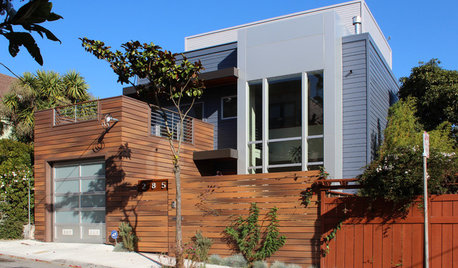
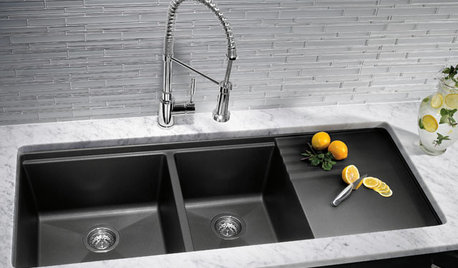

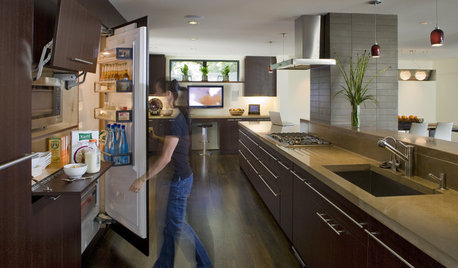


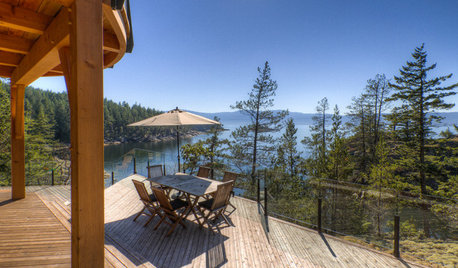
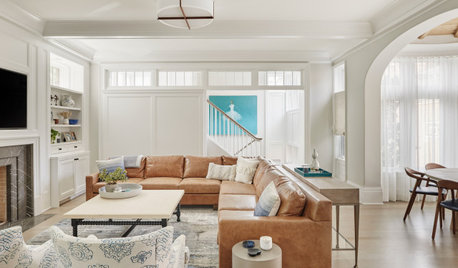
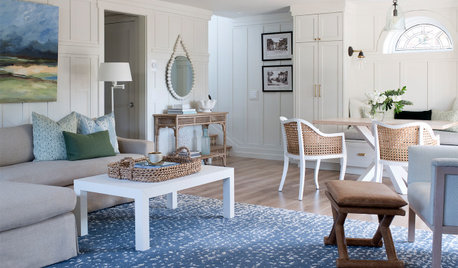
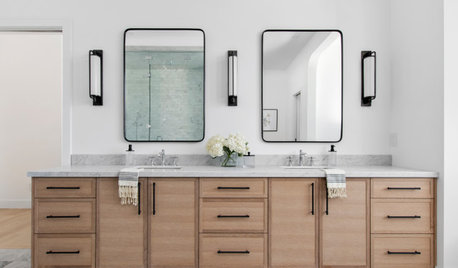






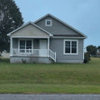
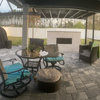
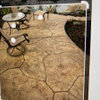

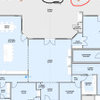
troubleseekeral
john_hyatt
Related Professionals
Hull Decks, Patios & Outdoor Enclosures · Lincolnton Decks, Patios & Outdoor Enclosures · Los Alamitos Decks, Patios & Outdoor Enclosures · New Berlin Decks, Patios & Outdoor Enclosures · Fort Worth Home Builders · Desert Hot Springs Flooring Contractors · Eustis Flooring Contractors · Pittsburg Flooring Contractors · Rogers Flooring Contractors · Valencia Flooring Contractors · Cherry Hill Siding & Exteriors · Kennewick Siding & Exteriors · Lombard Siding & Exteriors · Madison Siding & Exteriors · Puyallup Siding & Exteriorsmartin_carthage
cubberlang
jscott951
Johnsr_johnhallhomes_com
www.thedeckbarn
HBSSLaw
dennisgli
Dawn Dominique